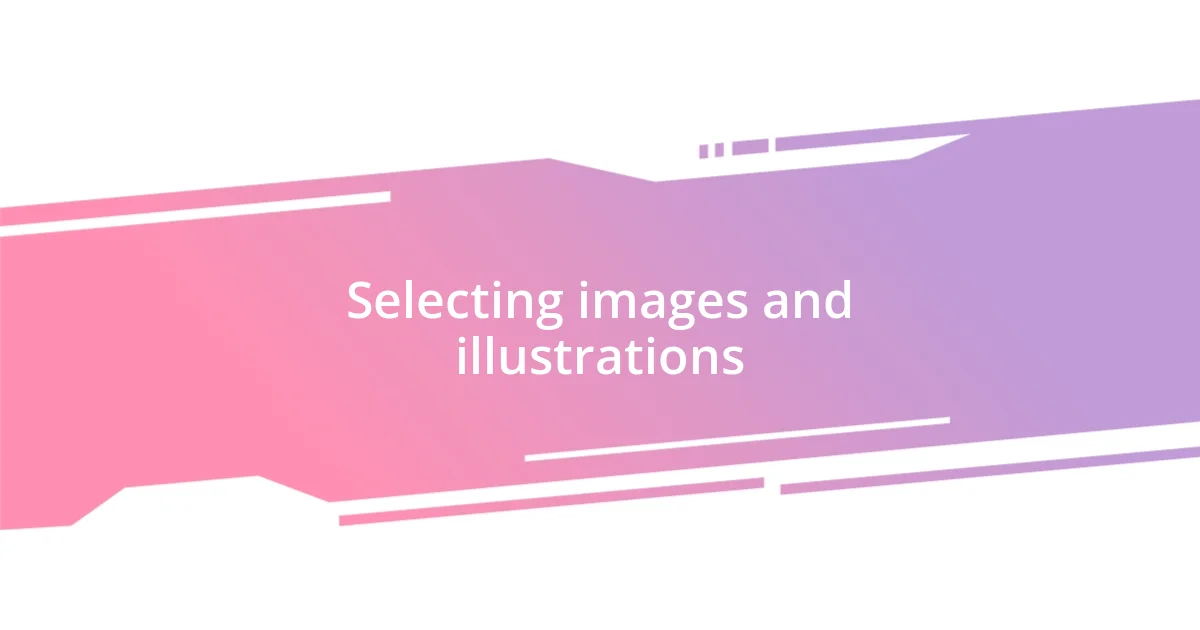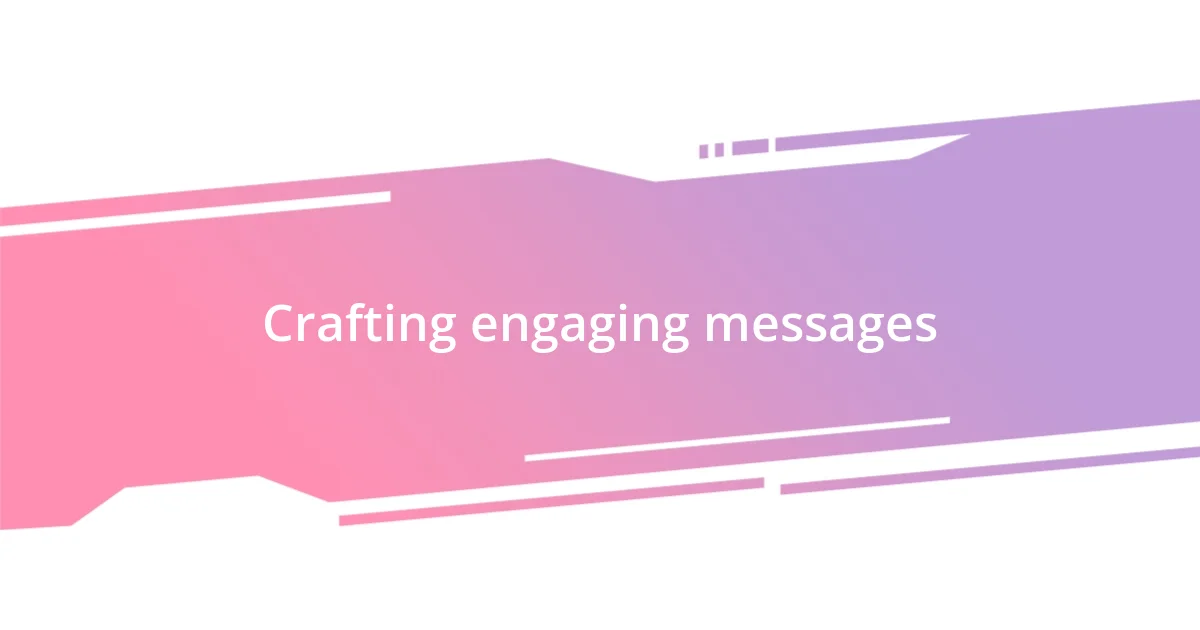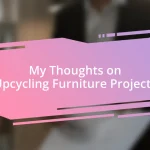Key takeaways:
- Understanding audience preferences is essential; personal connections often resonate more than just scenic beauty.
- Choosing the right theme and style can evoke emotions and foster connections, making postcards more than just images.
- Incorporating local elements and gathering feedback enhances authenticity and refines designs, fostering a deeper connection with the audience.

Understanding audience preferences
Understanding audience preferences is crucial when designing travel postcards. I remember a time when I created a series showcasing vibrant landscapes from my travels. Surprisingly, the postcards featuring local people and their daily lives resonated more with my friends than those highlighting picturesque views. This experience taught me that personal connections often hold more emotional weight than just scenic beauty.
What strikes me as particularly interesting is how preferences can vary significantly based on where someone is from. For instance, travelers from urban areas may appreciate the simplicity of rustic scenes, while those from the countryside might be drawn to the vibrancy of city life. I once sent a postcard of a bustling market to a friend from a quiet village; his response revealed that he found joy in the chaos that felt foreign yet fascinating. Have you noticed how people are often attracted to the unfamiliar?
Ultimately, tapping into what resonates with your audience can elevate your designs. It’s all about tuning in to their emotions and experiences. I like to think about what stories each postcard tells and how it aligns with the viewer’s own travel dreams or memories. Are you designing with your audience’s heart in mind? Understanding their preferences isn’t about guessing; it’s about genuinely connecting.

Choosing themes and styles
Choosing a theme for your travel postcards is like selecting the perfect frame for a cherished photo. Each theme sets the mood and can evoke different feelings. For instance, I once decided to create a series around ‘adventures in nature,’ which included wild landscapes and cozy cabins. The response was overwhelmingly positive; people love to escape to the great outdoors, even if just for a moment! Themes centered on relaxation and leisure, like beach getaways or spa retreats, can instantly transport the viewer to a more tranquil state of mind.
The style you choose plays a significant role too. Whether it’s vintage, modern, or minimalist, your design style should complement your theme. When I experimented with a retro aesthetic for a set of postcards featuring classic European landmarks, it struck a nostalgic chord. Many people shared stories of their own travels, expressing how those visuals reminded them of their own experiences. This kind of connection makes the postcards not just pretty images but a vehicle for shared memories.
Consider blending themes and styles to create a unique aesthetic that stands out. One time, I mixed a whimsical style with a carnival theme for postcards from a local fair. It brought back childhood memories for many friends who received it, sparking conversations about fun fairs and the excitement they felt growing up. So, don’t hesitate to play around with your designs! Your creativity can lead to unexpected yet delightful connections with your audience.
| Themes | Styles |
|---|---|
| Nature Adventures | Vintage |
| Cultural Connections | Modern |
| Relaxation Escapes | Whimsical |

Selecting images and illustrations

Selecting images and illustrations
Choosing the right images and illustrations is where the magic truly comes alive in postcard design. I distinctly remember selecting a whimsical watercolor illustration for a series on my travels through Italy. I found that it not only captured the essence of the charming streets of Florence but also resonated with those who value artistry. There’s something timeless about a hand-drawn image that evoked a sense of nostalgia and wonder, drawing those who viewed it into a different world where they could almost taste the gelato and hear the laughter of locals.
When dealing with photographs, leveraging vibrant colors and dynamic angles can create a more intimate connection. Think about the emotional response you want to evoke. Here are a few tips to consider when selecting visuals:
- Choose Emotionally Charged Moments: Like a sunset over the ocean or street musicians bringing joy.
- Opt for Unique Perspectives: Aerial shots or close-ups can make ordinary scenes extraordinary.
- Prioritize Quality: Crisp, clear images always speak volumes and enhance overall design.
- Mix Media: Incorporating both photography and illustrations can create a rich texture and a beautiful contrast.
- Reflect Local Culture: Images showcasing local traditions or cuisine not only tell a story but foster a sense of adventure.
By thoughtfully combining these elements, you can create postcards that are not only visually appealing but also convey stories that invite viewers to share in your journey.

Crafting engaging messages
Crafting messages that resonate is vital for engaging your audience. I always aim to include a personal touch, like sharing a vivid memory associated with a place I visited. For instance, when I wrote about a small café in Paris, I described the rich aroma of coffee and the delicate sound of a jazz piano playing softly in the background. This not only paints a picture but makes the message feel like a shared experience. Have you ever been somewhere that felt almost magical? Tapping into those emotions can draw your readers in and make them feel connected to your travels.
A strong call-to-action can also enhance your message. When I created postcards showcasing my adventure in the Swiss Alps, I encouraged recipients to “imagine themselves standing among the towering peaks.” This invitation invites them to visualize and even dream about their own adventure, sparking their curiosity. Questions like, “What’s your favorite travel memory?” can stimulate thoughts that encourage sharing, creating a dialogue rather than just a one-way message.
Lastly, keeping messages concise is essential. I try to limit myself to just a few lines, focusing on the essence of the experience. A postcard about my recent beach trip simply said, “Sunsets here are a symphony of colors,” which not only describes the scene but also evokes emotions of peace and joy. Short and impactful lines can leave a lasting impression, inciting curiosity and encouraging the recipient to explore the story behind those words. How do your favorite moments in travel feel when you describe them? Embracing that essence in your messages can bridge the gap between you and your audience.

Incorporating local elements
When designing travel postcards, incorporating local elements can truly enhance the authenticity of the experience. I remember wandering through the vibrant markets of Marrakech, where the rich colors and intricate patterns captivated my senses. I decided to feature decorative tile motifs in my postcard design—these intricate details not only represented the local culture but also invited viewers to immerse themselves in the exotic atmosphere that surrounded me. Isn’t it amazing how a single design choice can evoke such vivid memories?
Another powerful local element is the use of traditional phrases or greetings in the local language. During my time in Japan, I learned that even a simple “Konnichiwa” could bring a smile to the locals’ faces. I decided to include this in my postcard, alongside an image of cherry blossoms. This small touch created a connection with the cultural identity, making the postcard feel like a personal love letter to the destination. How do you think a phrase could elevate your own designs?
Lastly, don’t underestimate the impact of local textures or materials in your postcard’s design. I recall picking up some handmade paper in a small workshop in a coastal town in Mexico; it featured beautiful fibers and vibrant colors. When I made a postcard using that paper, it felt more like an extension of the place itself. Including tactile elements like this not only enhances the visual appeal but also adds a sensory experience that makes the postcard memorable. How do you think physical textures influence your perception of a place?

Designing for print and digital
When considering design for both print and digital formats, it’s crucial to remember that each medium has unique requirements. For instance, when I designed a postcard for a digital platform, I focused on vibrant colors and high-resolution images to ensure they stood out on screens. I noticed that a subtle gradient often caught the eye more effectively than solid colors. Have you ever scrolled past a dull image? That’s why I always emphasize the visual impact.
In contrast, print designs require careful consideration of texture and material. I recall creating a series of postcards printed on recycled paper, which added a rustic feel that digital designs can’t replicate. This choice not only resonated with eco-conscious recipients but also evoked a sense of nostalgia that felt fitting for the local charm I was trying to capture. How do you think the choice of paper affects the perception of your designs?
Ultimately, balancing the strengths of both formats is key to successful postcard creation. When I made a postcard that I distributed digitally but also printed for friends, I ensured the message was short and impactful, perfect for both contexts. Seeing the same design on a screen and having a physical copy in hand created a lovely sense of continuity. What strategies do you employ to bridge the gap between digital and print?

Testing and gathering feedback
Testing your postcard designs before finalizing them is crucial. I often share my drafts with a small group of friends or fellow designers to gather feedback. Their diverse perspectives help me see my work with fresh eyes. Have you ever found that someone else’s insight completely changed your view? It’s enlightening, isn’t it?
When I create a postcard, I sometimes conduct informal surveys online, asking people what resonates with them. One time, I posted two versions of a postcard featuring a sunset over a famous landmark. To my surprise, most people preferred the one with a warmer color palette, which made it feel more inviting. That experience reminded me of the power of collective feedback in refining my designs.
Finally, I believe that incorporating feedback is an ongoing process. After each postcard release, I pay attention to reactions on social media and in-person interactions. I recall the excitement of noticing how many comments related to the local anecdotes I shared. This feedback loop not only helps refine future designs but also deepens my connection with the audience. Isn’t it fascinating how each piece can create an ongoing dialogue?














